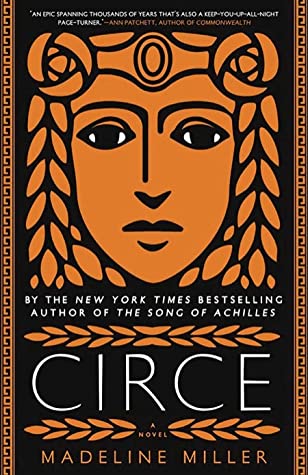Review: Madeline Miller’s “Circe”
by Miles Raymer

I chose Madeline Miller’s Circe to cap off my recent exploration of Greek Mythology. It didn’t grip me as strongly as The Song of Achilles, but it had its own witchy charms. It’s a first person account of Circe’s life, starting with her birth into the family of Helios, the Titan sun god. Circe is considered a nymph––not particularly powerful compared to greater gods, but still immortal. Growing up, Circe is an outcast amongst her family and their many admirers, so when she discovers a knack for herb-based magic that may threaten the power balance between the Titans and Olympians, she is exiled to an island called Aiaia. It is here that she makes her home, develops her magical skills, and assumes a new identity as a “pharmakis,” or witch. This sets the stage for her fateful meeting with Odysseus, the central hero of The Odyssey.
Thematically, Circe provides a pensive look at the tension between immortality and mortality, along with a feminist critique of heroism that situates it firmly in a contemporary value system. Miller’s observations about the “great chain of fear”––the power structure that situates Zeus above all, stronger gods above lesser ones, and lesser gods above humans––provide social commentary that’s trenchant without being too heavy-handed (32). Circe’s middling position in this chain affords her the dual experience of being subjected to the whims of those above her while also feeling sympathy for those below; over time, she develops a fascination with mortals and a fondness for the ephemeral suffering and grief of human life. To add a layer of ethical complexity, Circe also encounters the harsh cruelty of desperate men and learns to take vengeance––first retroactively and then preemptively.
The novel’s pacing is a bit inconsistent; after a slow start, it picks up considerably in the rising action that culminates with Odysseus’s arrival on Aiaia. The year that they spend together as lovers is completely captivating, with two brilliant minds sparring in a flurry of suspicion, infatuation, and genuine respect. The story’s energy then drops off again when Odysseus leaves, and continues at a slow crawl for the book’s latter third. This section, despite being a bit dull, does contain some excellent reflections on the nature of heroism, especially the ways in which traditional conceptions of glory and honor tend to leave a lot of destruction in their wake. This interpretation of Odysseus’s legacy––that he was primarily a man who “made life for others a misery”––is delightfully subversive (321).
I don’t think I would have liked the novel overall if not for the final chapter, so I recommend perseverance to any readers who are struggling to finish. It’s a beautifully-rendered and fitting conclusion, and one that I didn’t see coming. Cheers to Madeline Miller for keeping this ancient storytelling tradition alive and well in our modern age.
Rating: 7/10
Fantastic review, as always!
Thanks for reading Jonah and glad you enjoyed it! 🙂